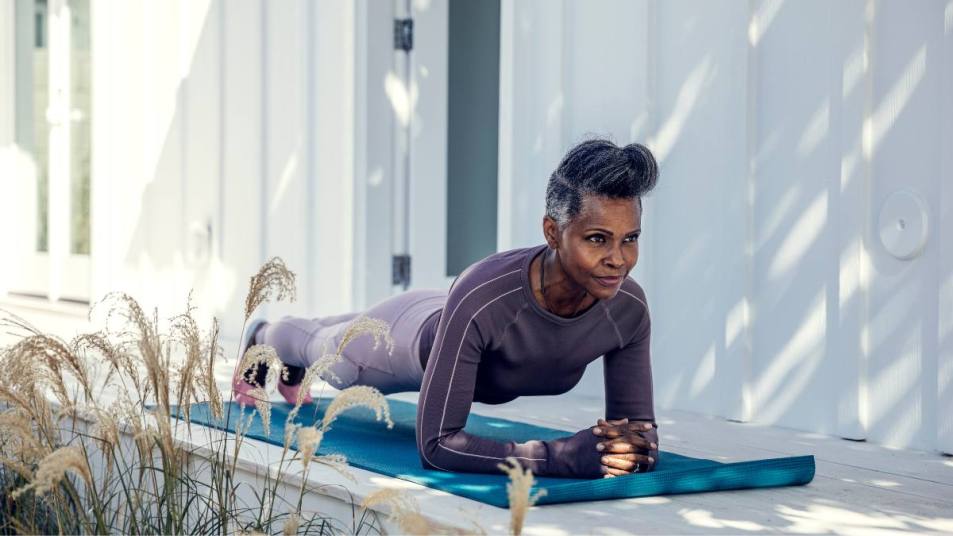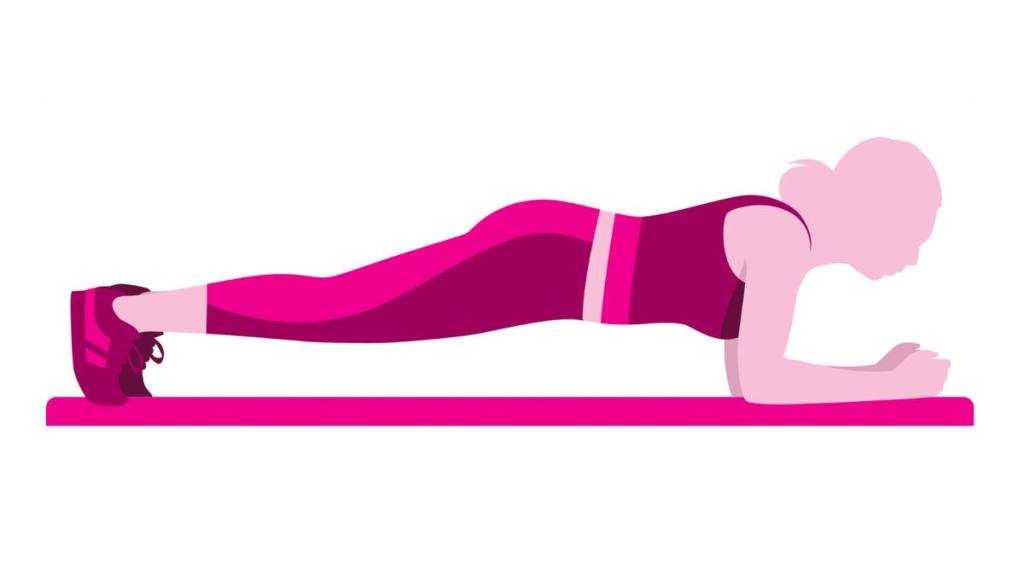Try This 30-Second Plank Test + See How the Results Can Help You Get Stronger
Bonus: It strengthens your core, back and shoulders, plus improves posture!

When it comes to building core strength, crunches have fallen out of favor and the plank is now considered the gold standard. Indeed, the thinking on this issue has shifted so much that in 2023, the U.S. Marine Corps switched from crunches to planks in its physical fitness test, noting that planks build more overall core strength and stability. And a plank test can reveal much about your total health.
“The plank is such a powerhouse of an exercise — people think of it as a core exercise, but it’s really a full body exercise,” says Chris Freytag, CPT, a fitness expert based in Minneapolis and found of Get Healthy U TV. “You’re using your core and your back extensors to hold you in place, and you’re engaging your quads and glutes and testing your upper body strength.”
Doing plank exercises three times a week has even been found to enhance the function of key immune cells, respiratory capacity and physical fitness in older adults, according to a study in a 2023 issue of the Journal of Exercise Rehabilitation.
You can gauge your core strength, stability and endurance at home by testing how long you can hold a plank.
How to do it: Plank test
This test is based on the standard plank (forearms on the floor), as opposed to
a high plank (palms on the floor), which can be hard on your wrists.

Step 1: Get down into a kneeling position on the floor and place your forearms flat on the floor (with your palms on the floor or your hands in fists), positioning your elbows under your shoulders.
Step 2: As you press up onto your toes, raising your body off the floor, pull your kneecaps up and feel your quads and glutes engage. (If you widen your stance, it’s a little easier than if you put your feet together.)
Step 3: Your body should be in a long, straight line (like a plank of wood!) from your head to your raised heels. Keep your gaze toward the floor ahead of you.
“Don’t sag in your shoulders or let them visit your ears, and don’t hike your hips up toward the ceiling or let them sag,” Freytag says. “Imagine that you have a ruler glued to the back of your head and back.” Try to hold the plank for 30 seconds with proper form.
Were you able to hold the plank test for 30 seconds?
Give yourself a pat on the back. Your next step? Gradually increase your plank time, working up to holding it for a minute, with proper form. “There’s nothing better than working toward improvement,” Freytag says.
Did you struggle?
Don’t beat yourself up. “Start with what you can do,” Freytag says, even if that means holding the plank for 10 to 15 seconds, then build up from there. You can also do a modified plank by putting your forearms on a stable coffee table or by dropping your knees and shins to the floor (almost like doing a push-up on your knees).
Another option: You can work up to strengthening your core and doing planks by regularly performing the bird dog exercise. Start on your hands and knees on the floor with your hands directly under your shoulders and your knees under your hips. While keeping your gaze toward the floor and your head in line with your spine, extend your right arm straight out in front of you and your left leg straight behind you. Hold this position for a count of five then return to the starting position; repeat with the opposite arm and leg extended. Do a total of five reps on each side.
After doing these core-strengthening moves for a few weeks, try the plank test again.
To increase the plank test challenge . . .
Once you can hold a plank with good form for a full minute, try holding it for even longer or doing alternating leg lifts (raising one leg at a time). Another option: Lift your leg and tap your toes to one side, then the other. Repeat for 1 minute.
The bottom line
It’s a good idea to do planks regularly. They not only strengthen the core, shoulders and back, they promote good posture, Freytag says. “By keeping your abdomen pulled in for a significant amount of time, you are training yourself to do it throughout the day.”
For more to boost your fitness, keep reading!
Fascia Exercises Are the 10-Minute Routine Helping Women Get One Size Smaller — Fast!
Expert Advice: ‘I’m Exercising More, But I’m So Sore. What Can I Do to Stop the Pain?’



















